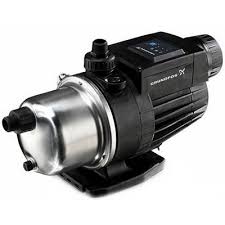What is booster pump and how does it work?
2024-07-29
A booster pump is a type of pump designed to increase the pressure of a fluid within a system. It’s commonly used in various applications where the existing pressure is insufficient for the desired operation, such as in water supply systems, irrigation, and industrial processes. Here’s an overview of what a booster pump is and how it works:
What is a Booster Pump?
A booster pump is a mechanical device that increases the pressure of a fluid (usually water) to improve the flow and performance of a system. It is often used in situations where the existing pressure is too low to meet the requirements of the system or application.
Key Applications:
1. Water Supply Systems:
- Residential: In homes with low water pressure, a booster pump can enhance water pressure for showers, faucets, and appliances.
- Commercial: In buildings with high water demand, booster pumps ensure consistent water pressure throughout the system.
2. Irrigation Systems:
- Agricultural: Boosts water pressure to provide adequate coverage in irrigation systems, ensuring even distribution of water to crops.
- Landscape: Enhances pressure for irrigation systems in large gardens or parks.
3. Industrial Processes:
- Manufacturing: Provides the necessary pressure for various industrial processes, including cooling systems and hydraulic applications.
- Fire Protection: Ensures adequate pressure in fire suppression systems.
4. Booster Pumps in HVAC Systems:
- Enhances water pressure in heating, ventilation, and air conditioning systems, particularly in high-rise buildings.
How Does a Booster Pump Work?
1. Basic Principle:
- A booster pump operates on the principle of increasing fluid pressure by converting mechanical energy into hydraulic energy. This is achieved by using an impeller or other means to add energy to the fluid.
2. Components:
- Impeller: Rotates to impart energy to the fluid, increasing its velocity and pressure.
- Volute or Diffuser: Guides the high-velocity fluid into a slower-moving area, converting kinetic energy into pressure.
- Motor: Drives the impeller and provides the mechanical energy needed for the pumping process.
- Inlet and Outlet: The pump has an inlet where the fluid enters and an outlet where the increased-pressure fluid exits.
3. Operation:
- Fluid Entry: Fluid enters the booster pump through the inlet.
- Energy Transfer: The impeller rotates, adding kinetic energy to the fluid and increasing its velocity.
- Pressure Increase: The fluid exits the impeller and moves into the volute or diffuser, where its velocity decreases and pressure increases.
- Discharge: The high-pressure fluid exits the pump through the outlet and is directed into the system.
4. Types of Booster Pumps:
- Centrifugal Booster Pumps: Use a rotating impeller to add energy to the fluid. Suitable for applications requiring continuous flow and moderate pressure increase.
- Positive Displacement Booster Pumps: Trap a fixed amount of fluid and force it into the discharge. Suitable for applications requiring high pressure and low flow rates.
Advantages of Booster Pumps:
1. Improved Pressure: Increases pressure in systems with insufficient water or fluid pressure.
2. Enhanced Performance: Ensures consistent performance in water supply and irrigation systems.
3. Versatility: Can be used in various applications, including residential, commercial, and industrial settings.
4. Cost-Efficiency: Often a more cost-effective solution than upgrading the entire water supply or plumbing system.
Considerations When Choosing a Booster Pump:
1. Pressure Requirements: Determine the required pressure increase for your application.
2. Flow Rate: Choose a pump with a flow rate suitable for your needs.
3. Fluid Type: Ensure the pump materials are compatible with the fluid being pumped (e.g., water, chemicals).
4. Pump Size and Capacity: Select a pump with appropriate size and capacity for your system.
5. Energy Efficiency: Consider the energy consumption of the pump to minimize operational costs.
Maintenance:
1. Regular Inspection: Check for wear and tear, leaks, and performance issues.
2. Cleaning: Clean the pump and its components to prevent clogging and ensure efficient operation.
3. Lubrication: Maintain proper lubrication of moving parts to reduce friction and wear.
4. System Check: Ensure the entire system, including pipes and valves, is in good condition and free of obstructions.
By understanding how a booster pump works and considering the key factors in choosing the right one, you can ensure efficient performance and improved pressure in your fluid systems.



